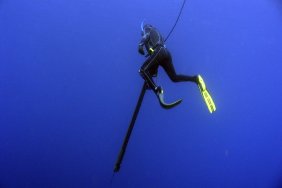 Heading into the muddy, mucky stuff? Of course you are, because that’s part of the fun of an ATV! And while you’re having a blast sailing through the deep dirty stuff, your transmission – belt-driven on the majority of UTVs and ATVs – is taking a real beating. If you’re hauling anything, the combination of extra weight and swampy ground can destroy your driveline before you even realize it.
Heading into the muddy, mucky stuff? Of course you are, because that’s part of the fun of an ATV! And while you’re having a blast sailing through the deep dirty stuff, your transmission – belt-driven on the majority of UTVs and ATVs – is taking a real beating. If you’re hauling anything, the combination of extra weight and swampy ground can destroy your driveline before you even realize it.
The deeper the mud, the more trouble the wheels have spinning. Applying the throttle is generally how drivers get them to move, but that action makes the belt slip and start to heat up. Do it too often, and the belt drive self-destructs!
To make your belts last longer and minimize equipment damage, try a few simple tricks. Before you splash into streams or heavy, muddy water be sure that your belt enclosure is well sealed. There should be a drain plug somewhere in the housing that can be utilized after you reach drier terrain. If you keep water out of the housing, the belt will be able to keep operating just as it should.
Use a low gear to move along through the deepest, stickiest mud. If your machine has it, use the 4×4 to get all four wheels churning. This puts substantially less pressure on the driveline but you’ll still be able to keep moving forward.
Belt-driven transmissions need to “breathe” in order to prevent excessive heat that can build up and damage moving parts. When you’re splashing deep, make sure that the water level doesn’t get above the enclosure’s snorkel by extending the tube to the highest point possible. If you are consistently running your ATV in marshy wetlands, it’s a good idea to have a professional install a complete snorkel kit on your machine. It will be worth the cost, giving your ride a longer, more trouble-free life.
Wet conditions and deep mud don’t have to put an end to your fun as long as you keep your equipment well-tuned and know a few driving tricks that will help protect it. Ready, set… let’s get dirty!








